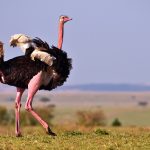
- Physical Training for Kilimanjaro climbing
-
Written by : Beauty Of Creation
Physical Training for Kilimanjaro Climbing
Kilimanjaro is one of the most challenging mountains to climb, and it requires proper physical training to ensure a successful summit. In this article, we will discuss the best physical training techniques and tips to help you prepare for Kilimanjaro climbing.
Understanding Kilimanjaro Climbing
Before starting your physical training, it is essential to understand the challenges of Kilimanjaro climbing. At 19,341 feet, Kilimanjaro is the highest mountain in Africa and the world’s highest free-standing mountain. It requires stamina, endurance, and physical fitness to complete the climb successfully.
Setting a Training Schedule
The first step in physical training is to set a training schedule. You need to be consistent with your training to prepare your body for the physical demands of Kilimanjaro climbing. Here is an example of a six-month training schedule:
- Month 1: Cardiovascular exercises, such as running, cycling, and swimming
- Month 2: Strength training, such as weight lifting and resistance training
- Month 3: Endurance training, such as hiking and stair climbing
- Month 4: High-altitude training, such as hiking at high altitudes
- Month 5: Rest and recovery
- Month 6: Final preparations, such as packing and mental preparation
Cardiovascular Exercises
Cardiovascular exercises are essential for Kilimanjaro climbing, as they improve your heart and lung capacity. These exercises include running, cycling, and swimming, and they should be done for 30-45 minutes, four to five times a week.
Strength Training
Strength training is crucial for Kilimanjaro climbing, as it helps you build muscle and endurance. It involves weight lifting, resistance training, and bodyweight exercises such as push-ups and squats. Strength training should be done two to three times a week, with each session lasting for 45-60 minutes.
Endurance Training
Endurance training is critical for Kilimanjaro climbing, as it helps you develop the stamina to complete the climb. This training involves activities such as hiking, stair climbing, and running uphill. Endurance training should be done two to three times a week, with each session lasting for 60-90 minutes.
High-Altitude Training
High-altitude training is essential for Kilimanjaro climbing, as it helps you adapt to the high altitude of the mountain. This training involves hiking at high altitudes, preferably above 10,000 feet. High-altitude training should be done once a week, with each session lasting for 3-4 hours.
Nutrition and Hydration
Proper nutrition and hydration are crucial for Kilimanjaro climbing, as they help you maintain your energy levels and prevent altitude sickness. You should eat a balanced diet with plenty of carbohydrates, proteins, and healthy fats. You should also drink plenty of water and electrolyte-rich drinks to stay hydrated.
Rest and Recovery
Rest and recovery are essential for Kilimanjaro climbing, as they help your body recover from the physical demands of training. You should take at least one day off each week to rest and recover, and you should also get enough sleep every night.
Mental Preparation
Mental preparation is critical for Kilimanjaro climbing, as it helps you stay focused and motivated during the climb. You should visualize yourself successfully summiting the mountain, and you should also practice positive self-talk and mindfulness techniques.
Final Preparations
In the final month before the climb, you should focus on final preparations, such as packing and mental preparation. You should ensure that you have all the necessary gear, including warm clothing and hiking boots. You should also practice your mental preparation techniques to ensure that you are mentally prepared for the climb.
Hiring a Guide
Hiring a guide is highly recommended for Kilimanjaro climbing, especially if you are not experienced in high-altitude mountaineering. A guide will not only help you navigate the mountain but also provide essential support and advice throughout the climb.
Physical training is crucial for Kilimanjaro climbing, and the training schedule should be tailored to your fitness level and abilities. Consistency is key, and you should prioritize cardiovascular, strength, endurance, and high-altitude training, as well as proper nutrition, hydration, rest, and mental preparation. Hiring a guide is highly recommended, and you should ensure that you have all the necessary gear and equipment for the climb.
FAQs
- Is Kilimanjaro climbing dangerous?
While Kilimanjaro climbing can be challenging, it is not considered dangerous if you have the proper training and experience.
- Can anyone climb Kilimanjaro?
Kilimanjaro climbing requires physical fitness and endurance, but anyone with the right training and preparation can climb the mountain.
- How long does it take to climb Kilimanjaro?
The climb usually takes 5-9 days, depending on the route and your physical abilities.
- What should I pack for Kilimanjaro climbing?
You should pack warm clothing, hiking boots, a sleeping bag, a backpack, and other essential gear for the climb.
- Do I need to hire a guide for Kilimanjaro climbing?
Hiring a guide is highly recommended for Kilimanjaro climbing, especially if you are not experienced in high-altitude mountaineering.
Best of Our Tanzania Safaris
From the Wildebeest Migration to the Big 5 and Tropical White Sand Beaches
Explore the best of Tanzania with our curated collection of safaris packages. Experience breathtaking wildlife, stunning landscapes and cultural richness, there’s something for everyone.


